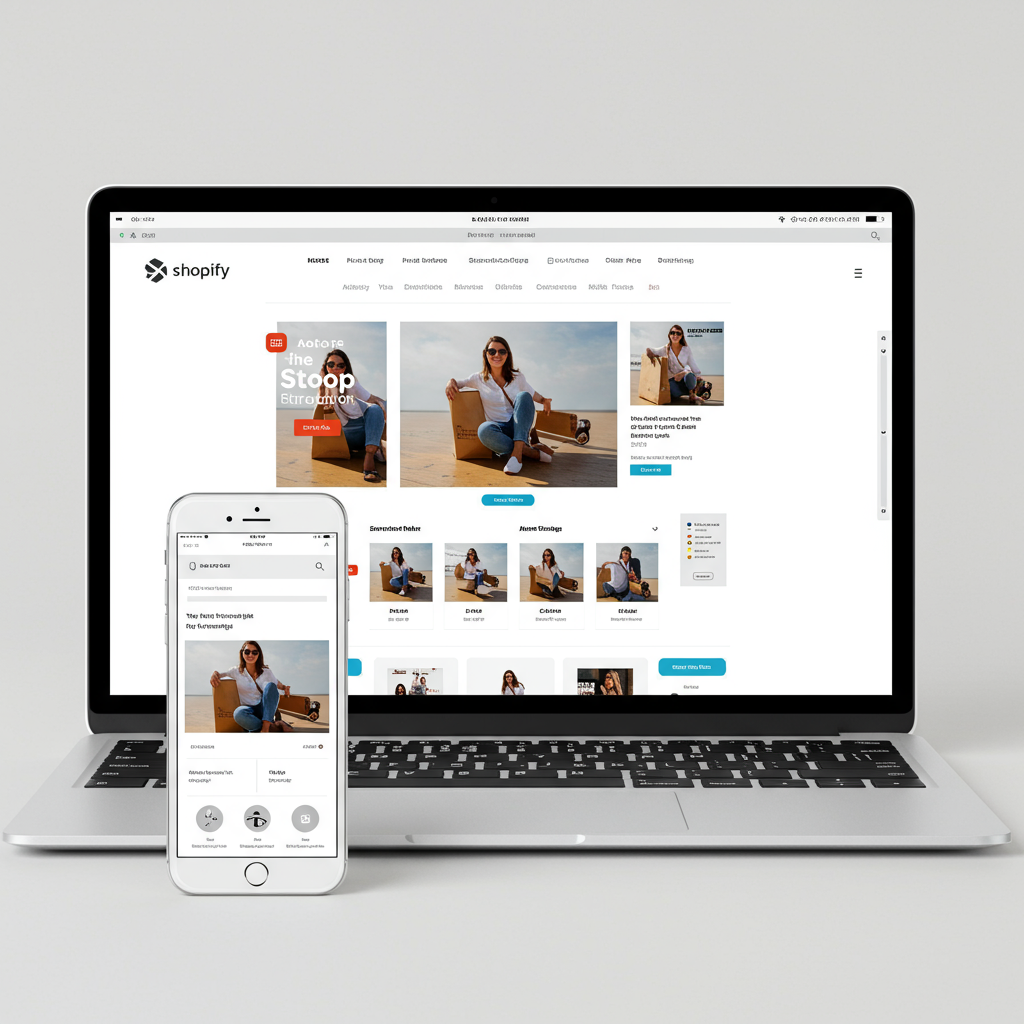Elevate your online store’s first impression and drive conversions with these forward-thinking design tips.
As a Shopify merchant, you know your online store’s homepage is more than just a digital storefront; it’s your brand’s first impression, your virtual handshake with potential customers.
In the rapidly evolving e-commerce landscape, staying ahead means constantly refining your approach. That’s why I want to share some crucial Shopify homepage design tips specifically tailored for 2025.
The goal isn’t just to look good, but to convert visitors into loyal customers by creating an intuitive, engaging, and high-performing experience.
First, let’s talk about the hero section. This is the prime real estate above the fold, the very first thing your visitors see.
For 2025, think dynamic and personalized. Instead of a static banner, consider a rotating carousel featuring your latest collections, best-sellers, or seasonal promotions, perhaps even tailored by AI based on visitor data.
Your main headline should be crystal clear, communicating your unique value proposition instantly. What problem do you solve? What makes you different? Make it compelling and concise.
Accompanying this, a strong Call-to-Action (CTA) button is essential. Make it prominent, action-oriented, and easy to click, like ‘Shop New Arrivals’ or ‘Discover Our Story.’
Next, navigation. A cluttered or confusing menu is a conversion killer. For 2025, simplicity and intuitive hierarchy are paramount.
Ensure your main categories are easily accessible, perhaps using a sticky header that remains visible as users scroll. Consider mega-menus for larger inventories, but keep them clean and well-organized.
Mobile-first design isn’t just a trend; it’s the standard. A significant portion of your traffic will come from mobile devices, so your homepage must be flawlessly responsive.
Test your design on various screen sizes. Buttons should be large enough for touch, text legible, and images optimized for quick loading on mobile networks.
Speed is another non-negotiable factor. A slow-loading homepage frustrates visitors and negatively impacts your search engine rankings. Every second counts.
Optimize your images, leverage browser caching, and minimize unnecessary apps or scripts that could bog down your site. Shopify’s built-in performance tools can help here.
Integrating video content is becoming increasingly powerful. A short, high-quality video showcasing your products in action or telling your brand story can significantly boost engagement.
Think about embedding product demonstration videos or lifestyle clips directly on your homepage to capture attention immediately and convey more information than static images.
Personalization, driven by AI, will be a cornerstone of 2025 e-commerce. Your homepage should ideally adapt to individual visitor preferences.
This could mean displaying recently viewed items, recommending products based on past purchases, or even showing different hero banners based on demographic data or browsing history.
Social proof remains incredibly effective. Showcase customer testimonials, star ratings, or user-generated content prominently.
A dedicated section for ‘Our Happy Customers’ or integrating an Instagram feed showing real people using your products builds trust and credibility, encouraging new purchases.
Don’t forget about clear pathways to customer support. Easy access to FAQs, a contact form, or a live chat widget reassures visitors and reduces bounce rates by answering their questions quickly.
Highlight your unique selling propositions (USPs) beyond just products. Do you offer free shipping? A satisfaction guarantee? Are you eco-friendly? Make these visible and compelling.
Consider a dedicated section for your brand’s values, especially if sustainability or ethical sourcing is a core part of your identity. Consumers in 2025 care deeply about these aspects.
Blog integration is also vital. Your homepage can feature your latest blog posts, positioning you as an industry expert and driving organic traffic through valuable content that resonates with your audience.
Finally, always be testing. A/B test different headlines, CTA button colors, image choices, and layout variations to continually optimize your homepage for conversions and better user experience.
The e-commerce landscape is dynamic, and your homepage should be too. Regularly review your analytics to understand user behavior and identify areas for improvement.
Remember, your Shopify homepage is a living, breathing entity. It should evolve with your brand and your customers’ needs, reflecting current trends and technologies.
By focusing on speed, personalization, mobile-first design, and compelling content, you’ll be well-equipped to thrive in 2025 and beyond.
I hope these tips provide a solid foundation for enhancing your Shopify store’s most important page and setting you up for success.
What do you think about this article? I’d love to hear your thoughts and any strategies you’ve found successful in your own Shopify journey!






